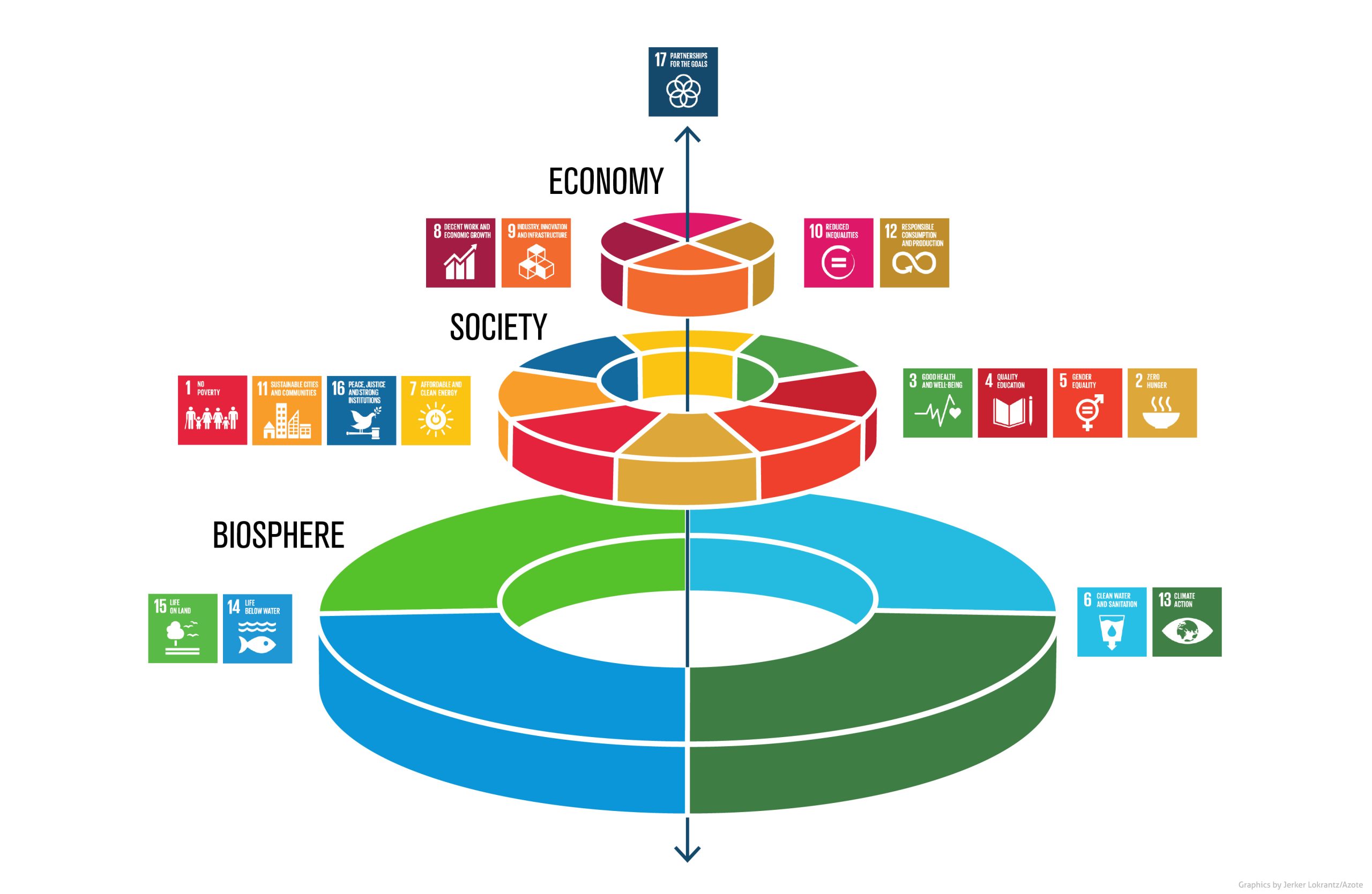Roadmap Overview
This textbook explores a wealth of diverse topics from a broad range of authors from very different academic disciplines. As we journey through this book we’ll explore topics stretching from climate change to international trade negotiations, the gender gap to the use of GMO crops. To navigate these widespread topics, we are utilizing the nested model of the Sustainable Development Goals (or SDGs). While not without critiques, the Sustainable Development Goals provides a framework for exploring international agricultural development around the globe.
The nested model (shown below) organizes the SDGs as they relate to three broad categories: the biosphere, society, and economy. In this textbook we’ll first explore some introductory topics (e.g. “what is international agricultural development?” and “what is sustainability?” After that we’ll work our way up the nested model of sustainability starting with the biosphere (topics including agroecology, pollinators, and use of genetically modified organisms), then society (topics including labor and agriculture and family farming), and then finally the economy (topics including agricultural trade policy and big data).
At the start of each section you’ll see a “roadmap” to outline the area of focus for the nested model of sustainable development. We hope this framework will provide a useful structure as we wrestle with varied but very interconnected topics which influence agriculture and food security around the globe.

Long Description
A graphic of the 3 levels of the SDG.
Title: The Sustainable Development Goals Model
3 rings are shown stacked on one another with the largest ring on the bottom and smallest on top. Each ring is sectioned into equal pieces similar to a pie. Each piece is labeled. The labels correspond to the SDG goals.
The bottom ring is the largest, labeled “Biosphere” and sectioned into fourths. These fourths are labeled:
6: Clean water and sanitation
13: Climate action
14: Life below water
15: Life on land
The middle ring, labeled “Society”, has a smaller diameter and has 8 sections labeled:
1: No poverty
11: Sustainable cities and communities
16: Peace, justice and strong institutions
7: Affordable and clean energy.
3: Good health and well being
4: Quality education
5: Gender equality
2: Zero hunger
The top is a disk labeled “Economy” that has 4 sections which are labelled:
8: Decent work and economic growth
9: Industry, innovation and infrastructure
10: Reduced inequalities
12: Responsible consumption and production
Above the top disk is the label “17 Partnerships for the goals”

